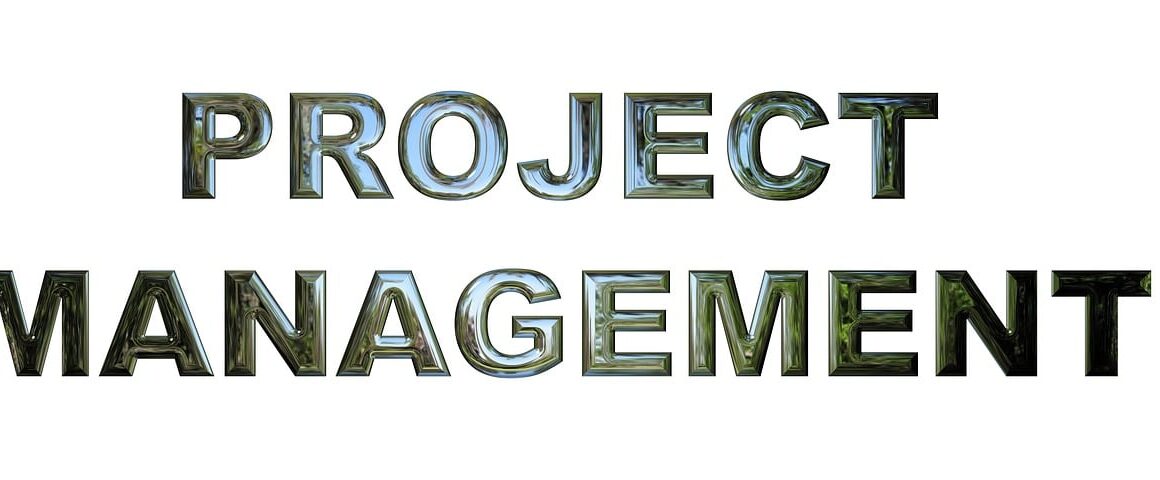Understanding Stakeholder Dynamics
In project management, recognizing and adapting to stakeholder dynamics is crucial for success. Stakeholders can be categorized into different groups based on their influence and interest in the project. This includes internal stakeholders, such as team members and executives, as well as external ones like clients and suppliers. Each group has unique needs and expectations that must be addressed for project success. Conducting a stakeholder analysis involves identifying these stakeholders, assessing their level of interest, influence, and potential impact on the project outcomes. Engaging effectively with stakeholders requires clear communication and ongoing collaboration. Regular updates and feedback loops ensure stakeholders remain informed, which builds trust and may lead to stronger relationships. Furthermore, it is essential to prioritize issues and concerns raised by stakeholders through active listening and dialogue. Creating a stakeholder engagement plan can streamline this process, ensuring all voices are heard and considered in decision-making. By tailoring engagement strategies, project leaders can foster a supportive environment that facilitates cooperation among diverse groups and enhances overall project outcomes. Therefore, investing time in understanding and managing stakeholder dynamics can significantly mitigate risks and improve project success rates.
Effective Communication Strategies
Communication is the cornerstone of successful stakeholder management and leadership. Utilizing a blend of communication strategies fosters understanding and alignment among all parties involved. Project leaders must adopt a proactive approach in sharing information, highlighting project goals, timelines, and responsibilities clearly. Emphasizing transparency cultivates trust and encourages stakeholders to express concerns and expectations openly. Utilizing various communication channels, such as emails, meetings, and project management tools, can cater to different stakeholders’ preferences. Regular progress updates keep everyone informed, while one-on-one check-ins can provide personalized engagement. Ensuring clarity in communication helps to prevent misunderstandings and sets realistic expectations. Employing visual aids, like charts and graphs, can further enhance comprehension, making complex information accessible. Additionally, employing active listening techniques can strengthen relationships by validating stakeholders’ viewpoints. Feedback mechanisms allow stakeholders to voice their opinions, fostering a collaborative atmosphere. Project leaders should remain adaptable, modifying communication approaches based on project progress and stakeholder feedback. Ultimately, effective communication strategies enhance stakeholder relationships, ensuring sustained engagement and support throughout the project lifecycle, which is vital for achieving desired outcomes.
Identifying Stakeholder Needs
Understanding stakeholder needs is essential for project success and strengthens leadership effectiveness. Conducting thorough needs assessments can uncover interests, expectations, and potential objections of various stakeholders. Surveys, interviews, and workshops are valuable methods to gather insights from diverse groups. This information enables project leaders to tailor their strategies, addressing specific concerns and aspirations. Once identified, stakeholder needs must be prioritized based on their impact on overall project goals. Establishing a shared understanding of key priorities among stakeholders can create a sense of ownership and commitment. Engaging stakeholders in the decision-making process fosters collaboration and drives innovation, as it brings diverse perspectives to the table. Additionally, recognizing shifting needs throughout the project is critical, as stakeholder priorities may change based on project phases or external conditions. Offering regular updates allows for feedback loops, ensuring adaptations can be made efficiently. This responsive approach not only builds trust but also reinforces the leadership role in guiding stakeholders toward common objectives. Ultimately, identifying and addressing stakeholder needs fosters strong partnerships that are fundamental to successful project execution.
Building Trust and Collaboration
Trust is a fundamental element in building effective stakeholder relationships. When stakeholders feel valued and respected, they are more likely to collaborate and support project initiatives. Establishing trust begins with consistent and honest communication, providing transparent information about project progress and challenges. Project leaders must demonstrate reliability by following through on commitments and addressing stakeholder concerns promptly. Engaging stakeholders in decision-making processes fosters a sense of ownership, encouraging them to invest emotionally in the project’s success. Collaborative practices, such as workshops or team-building exercises, can strengthen relationships and enhance cooperation among stakeholders. Additionally, recognizing accomplishments and contributions can motivate stakeholders, reinforcing their sense of connection to the project. Implementing conflict resolution strategies can also prevent misunderstandings and preserve relationships during challenging times. Acknowledging diverse viewpoints and advocating for constructive dialogue cultivates an inclusive environment where all stakeholders feel empowered to share their opinions. Ultimately, trust and collaboration lead to stronger partnerships, enabling project leaders to navigate complexities more effectively and facilitating the successful achievement of project objectives.
Assessing Stakeholder Influence
Assessing stakeholder influence is crucial for effective project leadership and management. By understanding each stakeholder’s level of authority, interest, and influence, project managers can prioritize engagement effectively. The power-interest grid is a valuable tool for this assignment, categorizing stakeholders into four quadrants: high power-high interest, high power-low interest, low power-high interest, and low power-low interest. This visual representation helps project leaders ascertain whom to engage vigorously and whom to keep informed selectively. High power-high interest stakeholders warrant active and straightforward communication to align them with project objectives. On the other hand, low power-low interest stakeholders may need to be simply kept informed with updates. Engaging with stakeholders according to their level of influence helps allocate resources efficiently, ensuring effective management of stakeholders and fostering appropriate relationships based on their needs. Additionally, analyzing the impact of their influence can help identify potential risks or bottlenecks before they arise. By proactively managing stakeholder relationships through strategic assessments, project leaders can ensure a smoother project implementation process.
Conflict Resolution in Stakeholder Engagement
Conflicts among stakeholders are inevitable in any project scenario, making conflict resolution skills essential for leaders. Effective leadership in managing conflict involves understanding different perspectives and fostering a culture of open dialogue. When conflicts arise, addressing them promptly can prevent escalation and maintain stakeholder engagement. Employing mediation techniques can facilitate constructive discussions, guiding stakeholders toward mutually beneficial resolutions. Leaders should focus on finding common ground by encouraging collaboration and understanding rather than imposing solutions. It is vital to listen actively to each party’s concerns, validating their feelings while guiding them toward a balanced approach. Establishing ground rules for discussions can create a respectful environment for addressing conflicts. Additionally, leveraging problem-solving approaches encourages stakeholders to explore options collaboratively, offering creative solutions that satisfy everyone involved. Following up after resolving a conflict reinforces trust and demonstrates genuine care for stakeholder relationships. By mastering conflict resolution strategies, project leaders can turn challenges into opportunities, strengthening team dynamics and ensuring stakeholder engagement remains a priority throughout the project lifecycle.
Evaluating Stakeholder Satisfaction
Monitoring stakeholder satisfaction is key to ensuring project success and continuous improvement. Regular evaluation mechanisms provide insights into how stakeholders perceive their engagement and project outcomes. Conducting satisfaction surveys, interviews, or feedback sessions can help gather valuable qualitative and quantitative data. Analyzing this information not only reveals areas for improvement but also highlights strengths in stakeholder engagement strategies. Stakeholder satisfaction metrics can help project leaders measure the effectiveness of collaboration efforts, determining if expectations are being met or if adjustments are necessary. Sharing the evaluation results with stakeholders fosters transparency, reinforcing trust and commitment. Moreover, integrating findings into project planning can enhance future project phases. Engaging stakeholders in discussions about improvements can empower them, making them feel valued in the decision-making process. Regularly assessing satisfaction encourages proactive leadership and builds a culture of continuous improvement. By valuing stakeholder feedback, project leaders can optimize processes and ensure that project goals align closely with stakeholder expectations, ultimately supporting project success and long-term relationships.
Conclusion: The Path Forward
Effective stakeholder management is a continuous process that requires dedication, adaptability, and strategic thinking from project leaders. Through understanding stakeholder dynamics, identifying needs, and fostering trust, leaders can build strong relationships that enhance project outcomes. Leveraging effective communication strategies ensures that important information is relayed transparently, creating a collaborative environment where stakeholders feel valued. Additionally, assessing stakeholder influence and satisfaction empowers project leaders to tailor their approaches, effectively managing expectations throughout the project lifecycle. Navigating conflicts constructively reinforces leaders’ roles as facilitators of collaboration and boosts commitment from stakeholders. Ultimately, a well-managed stakeholder relationship can elevate project success, leading to successful deliverables and improved organizational reputation. Going forward, project leaders must continuously refine their skills and strategies while prioritizing stakeholder engagement. This approach not only benefits the current project but also fosters long-term relationships that can lead to future collaborations. With careful attention to stakeholder needs and expectations, leaders can drive positive results while contributing to their teams’ overall success in the dynamic world of project management.


